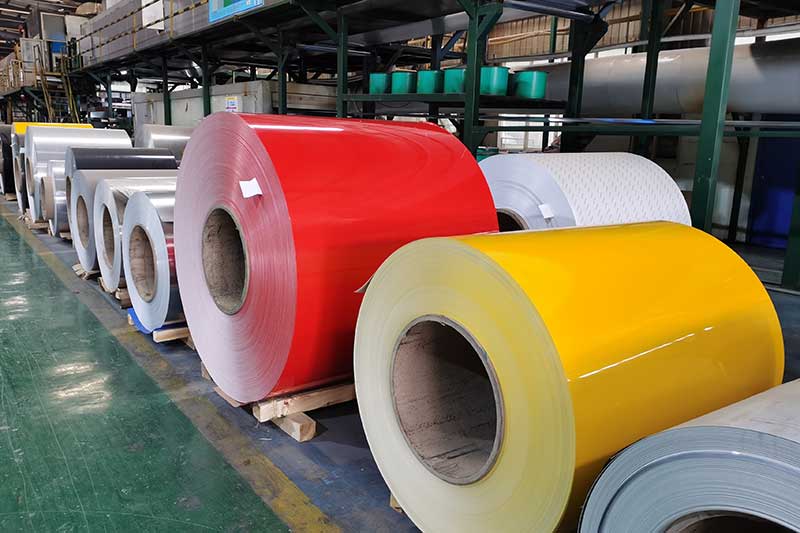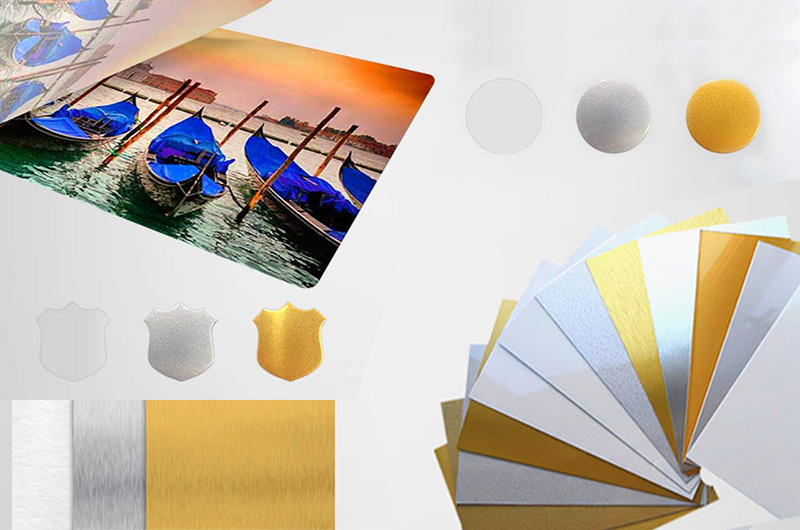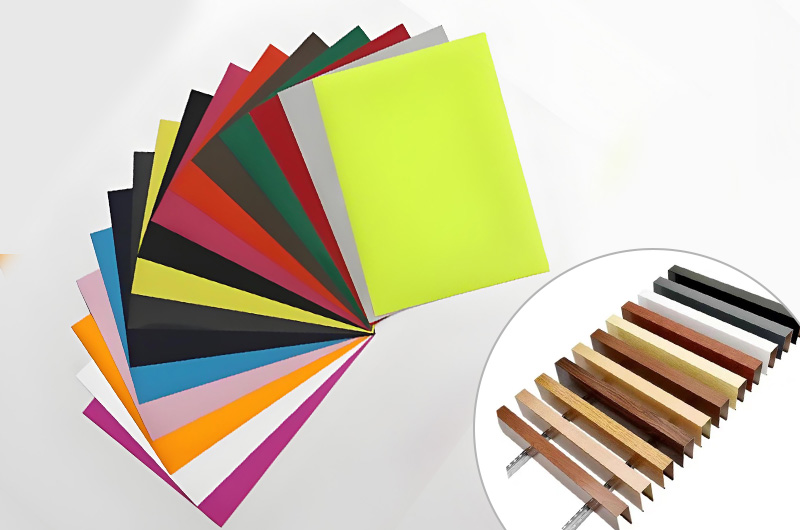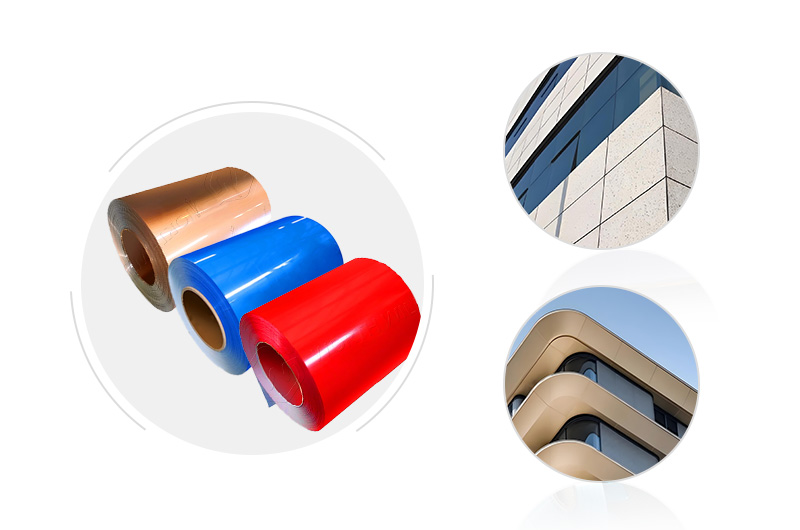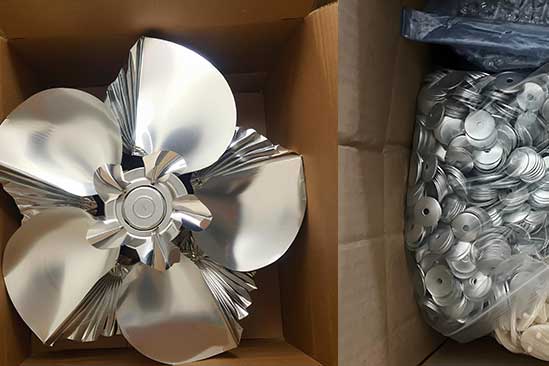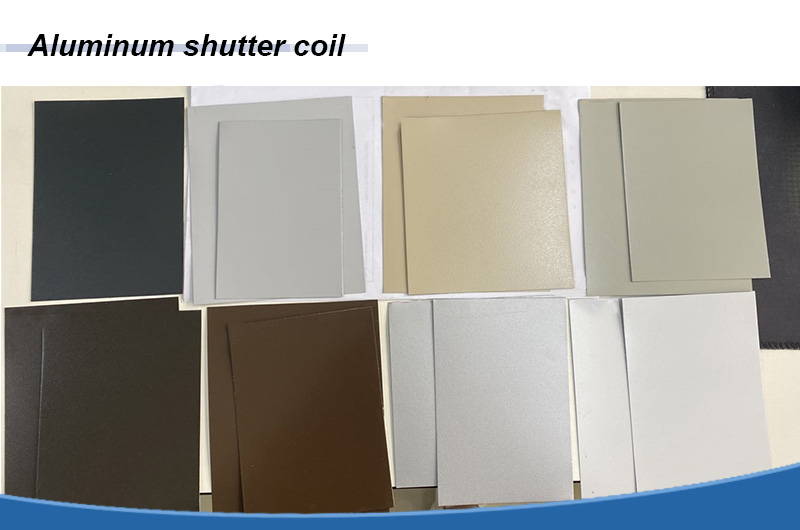What is a Perforated Aluminum Sheet and panel?
A perforated aluminum sheet and panel refers to an aluminum sheet with regular or irregular holes processed on its surface using technologies such as CNC punching machines and laser cutting. In essence, it is a form of metal engraving art that achieves functions like light transmission, ventilation, and sound absorption through the holes.

Core Characteristics
- Lightweight and High Strength: A 3mm thick sheet weighs only 8kg/㎡, with a tensile strength of 100-280N/mm².
- Weather-Resistant and Fireproof: Fluorocarbon coating provides corrosion resistance, and it has Class A fire resistance.
- Strong Plasticity: Can be processed into flat, curved, folded, and other shapes.
- Light and Air Permeable: Holes maintain spatial permeability.
- Acoustic Optimization: Can reduce noise by 15-25dB when combined with sound-absorbing cotton.
- Light and Shadow Art: Holes filter light to form dynamic light and shadow effects.
How to Perforate?
Common perforation methods: CNC punching, stamping process, laser perforation.

Worthwill's perforation methods use CNC and combined punching machines for mass production and repeated patterns. Water jet or laser is ideal for creating custom perforations and patterns, with a variety of hole sizes and unique shapes available.
What is Perforation Rate?
Perforation rate is the percentage of the total area of perforated holes relative to the total area of the perforated region. It is a core factor affecting the overall visual perception of perforated aluminum sheet building facades and reducing building energy consumption.

The maximum perforation rate is approximately 60% (which requires the sheet size to be within 1500*3000; if exceeding this range, secondary positioning is needed). The higher the perforation rate, the greater the impact on the flatness of the aluminum sheet.
- Formula: (Total area of holes ÷ Total area of aluminum sheet) × 100%.
- Function: Determines the light transmission, ventilation rate, and acoustic performance of the aluminum sheet.
- Extreme Value: The current technical upper limit is about 60% (exceeding this value requires secondary positioning processing).
What is Hole Diameter?
Hole diameter refers to the diameter of the perforation, which is one of the factors affecting perforated aluminum sheets. Controlling the hole diameter, hole spacing, and arrangement can change the visual effect.
The most common is a hole diameter of 6mm with a pitch of 15mm.
- Range: Regular range is 0.5mm-30mm (minimum can reach 0.5mm).
- Impact: Together with hole spacing, it controls visual clarity (smaller diameters are delicate, larger diameters are rugged).
Worthwill Specifications and Sizes
- Alloys: 1060, 1100, 3003, 5005, 5052, 6061, 6063
- Hole Types: Circular, oval, square, slotted, hexagonal, decorative patterns, custom-shaped holes
- Common Hole Diameters: 1/16 inch, 1/8 inch, 1/4 inch
- Hole Diameter Ranges: Micro holes (0.5–2.0 mm), standard holes (2.0–10.0 mm), large openings (10.0–25.0 mm)
- Sizes: 1000×2000 mm, 1220×2440 mm (4 feet×8 feet), 1250×2500 mm, custom sizes available
- Thickness: 0.2mm-10mm
- Surface Treatments: Polished, brushed, anodized, powder coated, PVDF coated, painted, sandblasted
- Standards: ASTM B209, EN 485, EN 573, JIS H4000, AMS QQ-A-250/2
- Certifications: Compliant with ISO 9001:2015, SGS, RoHS, REACH, CE, ASTM standards
Custom perforated patterns and shapes are produced using millimeter-precision machines and other new manufacturing technologies. Infinite varieties of folded and perforated panel designs can also be achieved.
Classification of Perforated Aluminum Sheets and panels
Based on Aluminum Sheet Substrate
- High-purity aluminum perforated sheets
- pure aluminum perforated sheets
- composite aluminum perforatedpanels
- brazed perforatedsheets
- Clad aluminum perforated sheets
Based on Hole Shape
- Round Hole Perforated Sheets and panels
- Oval Perforated Sheets and panels
- Oblong Hole Perforated Sheets and panels
- Rectangular Hole Perforated Sheets and panels
- Cross-shaped Hole Perforated Sheets
- Plum Blossom Hole Perforated Sheets and panels
- Fish Scale Hole Perforated Sheets and panels
- Pattern Hole Perforated Sheets and panels
- Pentagram Hole Perforated Sheets and panels
- Square Hole Perforated Sheets and panels
- Slotted Hole Perforated Sheets and panels
- Hexagonal Hole Perforated Sheets and panels
- Diamond Hole Perforated Sheets and panels
- Triangular Hole Perforated Sheets and panels
- Custom Shapes Perforated Sheets and panels
Based on Hole Arrangement
- 60° Staggered Perforated Sheets and panels
- 45° Staggered Perforated Sheets and panels
- Straight Perforated Sheets (90°) Pattern
- Diagonal Pattern Perforated Sheets and panels
- Custom Patterns Perforated Sheets and panels
Based on Perforated Aluminum Sheet Thickness
- Thin Gauge Perforated Sheets (0.5mm to 1.5mm)
- Medium Gauge Perforated Sheets (1.5mm to 3mm)
- Thick Gauge Perforated Sheets (3mm and above)
Based on Perforation Technology
- Pattern Perforated Sheet and Panels
- Formed Perforated Sheet and Panels
- Heavy-Duty Perforated Sheet and Panels
- Ultra-Thin Perforated Sheet and Panels
- Micro-Perforated Sheet and Panels
- Wire-Cut Perforated Sheet and Panels
- Laser Perforated Sheet and Panels
Based on Perforated Aluminum Sheet Surface Treatment
- Embossed Perforated Sheets and Panels
- Painted Perforated Sheets and Panels
- Brushed Perforated Sheets and Panels
- Polished Perforated Sheets and Panels
- Powder Coated Perforated Sheets and Panels
- Anodized Perforated Sheets and Panels
- Milled Perforated Sheets and Panels
Based on the Shape of Perforated Aluminum Sheets
Flat Perforated Aluminum Sheets and Panels
The holes of flat perforated sheets are on a single plane, with a flat surface, allowing free arrangement of holes, suitable for patterned designs, and helping to enhance the integrity of the building. It is the most common type of perforated aluminum sheet.
- Flat surface, free arrangement of holes, suitable for patterned designs
- Visually transparent, does not block side vision, conducive to building integrity
Folded Perforated Sheets and Panels
Through unique folding designs, they show significant advantages in architectural design and application.
- Folding increases structural thickness, greatly enhancing strength
- Reduces vertical division, seam connections, and keels, saving costs
- Available in two types: concave-convex and zigzag, with adjustable depth and angle
Wavy Perforated Aluminum Sheets and Panels
Wavy perforated sheets are formed by arc bending on the basis of folded sheets, creating a unique wavy shape. This design not only retains the structural advantages of folded sheets but also brings softer and more artistic visual effects.
- Arc bending on the basis of folded sheets, forming a wavy softened surface contour
- Creates a hazy and ambiguous semi-transparent atmosphere with rich and soft light and shadow changes
- Softened surface contour makes it easy to integrate and adapt to the surrounding environment
- Bending treatment increases structural thickness, with high strength, reducing the number of vertical keels
Price of Perforated Aluminum Sheets
The price of perforated aluminum sheets is mainly determined by their alloy composition, sheet thickness, and hole patterns, and aluminum ingot price.
Generally speaking, the higher the content of precious metals in the alloy, the higher the price; the thicker the sheet, the higher the price; the more complex the holes, the higher the price.
Typical Applications
Perforated Aluminum Panels for Façade
Perforated sheets are made from pure aluminum or aluminum alloys through pressure processing and punching. They have various hole types, a wide range of optional thicknesses, good light and air permeability, excellent performance, and are often used for building exterior curtain walls.
- Common hole types: Round holes, square holes, rectangular holes, diamond holes, hexagonal holes, triangular holes, irregular holes, pattern holes, etc.
- Common materials: 1060, 1100, 3003
- Thickness: 0.2mm to 10mm, with the common range for curtain walls being approximately 1.5mm to 6.0mm.
- Flexible design: The overall effect can be optimized by adjusting the pattern, arrangement, and density of holes.
- Surface treatments: Fluorocarbon spraying, powder coating, anodizing, wood grain transfer printing, etc.
Aluminum Perforated Sheets and Panelsfor Ceilings
Aluminum perforated sheets for ceilings are a common and practical material used in interior decoration. They are made by stamping various shapes and patterns of holes into aluminum sheets or aluminum panels.
- Common hole types: Round holes, square holes, rectangular holes, diamond holes, hexagonal holes, triangular holes, irregular holes, pattern holes, etc.
- Common materials: 1100/1060 (Series 1 pure aluminum), 3003 (aluminum-manganese alloy), 5005 (aluminum-magnesium alloy)
- Common thickness: 0.5mm - 3mm (commonly used for indoor ceilings)
- Common specifications: 300mm×300mm, 300mm×600mm, 600mm×600mm, 600mm×1200mm, etc. (customization available)
- Surface treatments: Powder coating, fluorocarbon spraying, baking paint, wood grain transfer printing, anodizing, etc.
Perforated Aluminum Sheets for Sound Barriers
Perforated aluminum sheets for sound barriers are road and industrial sound insulation materials that achieve efficient noise reduction through precise hole design combined with sound-absorbing structures.
- Acoustically optimized structure: Holes + back cavity sound-absorbing cotton (rock wool/glass wool), with a noise reduction of 15-25dB
- Strong environmental weather resistance: 3-6mm thick aluminum sheet substrate, with a tensile strength of 100-280N/mm²
- Fluorocarbon coating resists acid mist and alkali corrosion, with Class A fire and moisture resistance
- Flexible control of sound wave transmittance with hole diameters of 0.5-30mm
- Supports gradient/patterned hole types
Perforated Aluminum Sheets for Interior Decoration
Perforated aluminum sheets for interior decoration are lightweight, fireproof, and customizable multi-functional materials. They achieve light transmission, sound absorption, and artistic expression through precise hole design, and are widely used in ceilings, partitions, walls, and art installations in modern spaces.
- Lightweight and light-transmitting: Using 1-3mm thin sheets (only 3-8kg/㎡) to reduce structural load, with a light transmittance of 5%-60% through holes to soften light.
- Acoustic optimization: Combined with backing sound-absorbing cotton (such as rock wool), it effectively reduces indoor reverberation noise and improves space comfort.
- Environmental adaptability: Class A fire resistance, moisture and corrosion resistance, suitable for high-humidity environments such as bathrooms and swimming pools.
- Customizable design: Supports parameterized holes (hole diameter 2-10mm, perforation rate 5%-60) to achieve gradient and patterned effects, meeting personalized needs.
Perforated Aluminum Sheets for Industrial Equipment
Perforated aluminum sheets for industrial equipment, through structural enhancement and environmental adaptability design, meet the four core needs of physical protection, efficient heat dissipation, noise control, and operational safety while achieving functional customization upgrades.
- Tensile strength: 100-280N/mm², resistant to equipment vibration
- Anti-corrosion coating: Fluorocarbon/powder coating resists acid mist and oil stains
- High-temperature resistance: Long-term resistance to 80℃ working conditions
- Moisture-proof and flame-retardant: Class A fire resistance, no rust in humid environments
Hot-Selling Sizes of Perforated Aluminum Sheets
| Hole Type | Hole Size | Pitch | Opening % | Thickness Range | Common Dimensions |
| Circular | 0.6 mm | 1.36 mm | 17.6% | 1.0-6.0 mm | 1000×2000 mm, 1220×2440 mm (4 feet×8 feet), 1250×2500 mm |
| Circular | 0.8 mm | 1.55 mm | 24.2% | 1.0-6.0 mm | 1220×2440 mm (4 feet×8 feet), 1250×2500 mm |
| Circular | 1 mm | 1.5 mm | 34.9% | 1.0-6.0 mm | 1000×2000 mm, 1220×2440 mm (4 feet×8 feet), 1250×2500 mm |
| Circular | 2 mm | 3 mm | 24.9% | 1.0-6.0 mm | 1220×2440 mm (4 feet×8 feet), 1250×2500 mm |
| Circular | 3 mm | 5 mm | 32.6% | 1.0-6.0 mm | 1220×2440 mm (4 feet×8 feet) |
| Circular | 3 mm | 6 mm | 22.6% | 1.0-6.0 mm | 1220×2440 mm (4 feet×8 feet) |
| Circular | 4 mm | 7 mm | 29.6% | 1.0-6.0 mm | 1220×2440 mm (4 feet×8 feet) |
| Circular | 5 mm | 8 mm | 35.4% | 1.0-6.0 mm | 1220×2440 mm (4 feet×8 feet) |
| Circular | 6 mm | 9 mm | 40.2% | 1.0-6.0 mm | 1000×2000 mm, 1220×2440 mm (4 feet×8 feet) |
| Square | 5 mm | 8 mm | 39% | 1.0-6.0 mm | 1000×2000 mm, 1220×2440 mm (4 feet×8 feet) |
| Square | 7 mm | 10 mm | 24.9% | 1.0-6.0 mm | 1000×2000 mm, 1220×2440 mm (4 feet×8 feet) |
| Square | 8 mm | 13 mm | 37.9% | 1.0-6.0 mm | 1000×2000 mm, 1220×2440 mm (4 feet×8 feet) |
| Circular | 3.5 mm | 5 mm | 44.4% | 1.0-6.0 mm | 1000×2000 mm, 1220×2440 mm (4 feet×8 feet) |
| Circular | 7 mm | 10 mm | 44.4% | 1.0-6.0 mm | 1220×2440 mm (4 feet×8 feet) |
| Circular | 8.2 mm | 13 mm | 36% | 1.0-6.0 mm | 1220×2440 mm (4 feet×8 feet) |
| Circular | 8 mm | 12 mm | 40.2% | 1.0-6.0 mm | 1220×2440 mm (4 feet×8 feet), 1250×2500 mm |
| Circular | 9 mm | 12 mm | 50.9% | 1.0-6.0 mm | 1220×2440 mm (4 feet×8 feet), 1250×2500 mm |
| Circular | 10 mm | 15 mm | 40.2% | 1.0-6.0 mm | 1220×2440 mm (4 feet×8 feet), 1250×2500 mm |
| Slotted | 2.5x20 mm | Staggered | - | 1.0-6.0 mm | 1220×2440 mm (4 feet×8 feet), 1250×2500 mm |
